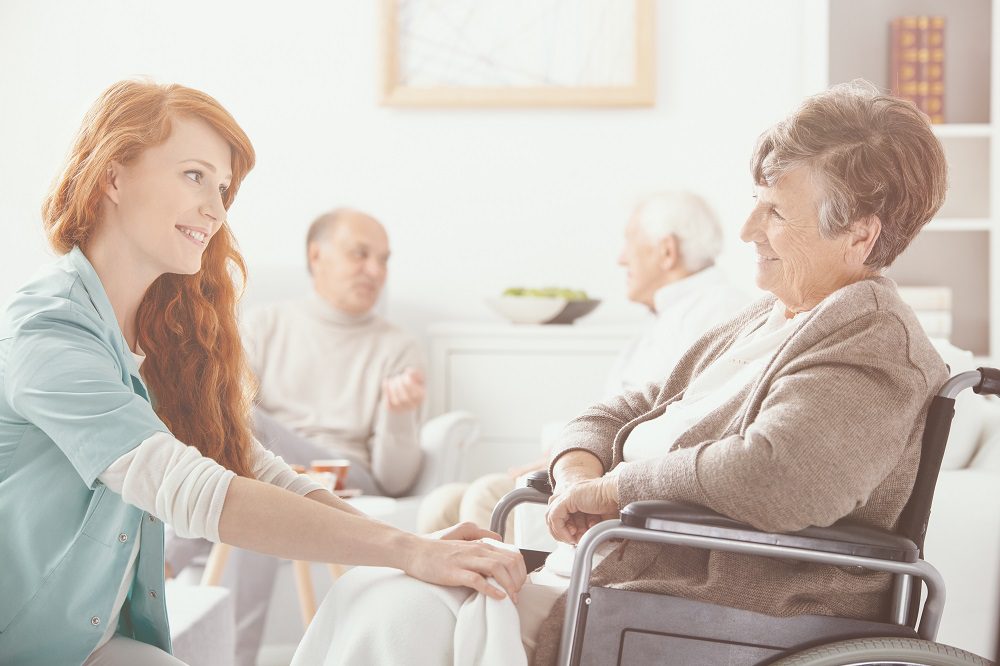Patient Safety Collaboratives (PSCs) identify and spread safer care initiatives in their local health and care systems. As part of our response to the COVID-19 pandemic, here are some information and resources to support staff in care homes.
Go back to patient safety during COVID-19.
Spotting serious illness and sepsis
Some people are more at risk than others of becoming unwell very quickly and developing a serious illness such as sepsis. This is known as ‘deterioration’ and it is important that anyone who cares for individuals who are at risk of deterioration knows how to spot the signs, especially during the current COVID-19 outbreak.
Find out about the tools available to help staff in care homes recognise physical deterioration and take the appropriate actions.
Pulse oximetry and remote monitoring guidance
COVID virtual ward models use pulse oximeters to safely monitor and support patients at home, providing an opportunity to detect a decline in the patient’s condition that might require hospital review and admission. Patient Safety Collaboratives are supporting the implementation of COVID virtual wards and the use of pulse oximeters in their local health and care systems.
A guide on pulse oximetry for care homes has been published by the Care Provider Alliance. This document brings together existing guidance with extra detail on what this means for people who live and work in care homes.
Oximetry is the subject of one of the care home staff training films mentioned above.
Free online video training for care home staff
Wessex and the West of England Academic Health Science Networks (AHSNs) and West Hampshire CCG, funded by Health Education England, have collaborated to produce a series of free videos and e-learning materials to support staff working in care homes to care for residents who are at risk of deterioration.
The series of 14 short videos describes how to take measurements from residents correctly (such as blood pressure and oxygen saturation), spots the signs of deterioration, and prevent the spread of infection.
Primary care in care homes during COVID-19 webinar
This webinar held on Wednesday 27 May 2020 shared examples of current good practice and collaboration between primary care and care homes, including resources to support virtual ward rounds.
You can watch the webinar and download the presentation.
Safe tracheostomy care
A toolkit for healthcare staff has been published by the National Tracheostomy Safety Project (NTSP) in collaboration with the AHSN Network and the National Patient Safety Improvement Programmes in response to the COVID-19 pandemic, to support healthcare staff who are looking after patients with tracheostomies.
Primarily the toolkit is for hospital staff. However, much of the material is also applicable to primary and community care settings.
Reducing medication problems in care homes
A national review of medication in care homes has been published by the Medicines Safety Improvement Programme, led by NHS England and NHS Improvement and delivered by England’s Patient Safety Collaboratives, hosted by Academic Health Science Networks (AHSNs).
You can read the full report and a blog from one its authors, Tony Jamieson, on the background to the research.
The team talked to both care home staff and their residents across England to understand how medication problems occurred and how they can be avoided in the future. Key issues included communication between care home, prescriber and dispensing pharmacy; care home staff training; leadership for safety; and the need to create a safety culture.
New leaflet for family members of care home residents
How is my relative being cared for during the COVID-19 pandemic?
UCLPartners have worked with North London Partners to develop a leaflet of frequently asked questions to answer some of the common concerns relatives have about family members in a care home during the COVID-19 pandemic.
The leaflet was produced with local care homes and relatives, quality leads, GPs and the relatives’ and residents’ association. The leaflet is available here and guidance on how to use it is here.
Internet offers to help care homes connect
During COVID-19, care providers are using digital technology to protect the health and wellbeing of vulnerable residents. Examples include video consultations with health professionals, ordering prescriptions, and supporting residents to talk with loved ones. NHSX and NHS Digital have negotiated and published a range of internet connection offers with telecom companies on the NHSX website. This is complemented by two new pieces of guidance: choosing an internet connection for your care home and how to use digital services in your care home.
NHS email accounts for care providers
NHSmail has made it easier for care homes and other social care providers to sign up for NHSmail. This provides them with a secure email account to safely exchange patient or sensitive information with other health and social care professionals. NHSmail is available to all domiciliary, residential or nursing care providers regardless of whether they support local authority, NHS or self-funded individuals. They may have one shared mailbox account and up to ten user accounts per site. More details are here.
An NHS email address will also grant you access to the Microsoft Teams communication tool to support remote working in response to the recent COVID-19 outbreak. The tool lets you use instant messaging and audio and video calling to support the delivery of frontline services, even while working remotely. Get more guidance here on using MS Teams, and the steps local organisations should take.
Improving safety in care homes
A report from the AHSN Network published in 2019 explores case studies of ways safety for residents of care homes is being improved. The publication showcases over 30 examples of projects delivered by Patient Safety Collaboratives and the Academic Health Science Networks (AHSNs) which host them. They include case studies in medicines safety, dementia, monitoring and screening, and workforce development. You can download the report.
COVID-19 resources
The Government has published this guidance for how to work safely in care homes and a guide to PPE for care home staff.
Follow this link for more information on patient safety during COVID-19.

The need for fast-paced innovation in healthcare is widely acknowledged. And ensuring that healthcare innovation is shaped by the people it serves remains a pressing priority – one made all the more evident by the growing emphasis on health equity in the 10 Year Health Plan. Patient voices are often cited as central to healthcare [...]

The NHS Innovation Accelerator (NIA) has revealed its 2025 cohort of Fellows. As the NIA celebrates a decade of helping to drive innovation in the NHS, this year’s cohort aligns with the Government’s three priorities: supporting the transition from analogue to digital, sickness to prevention and hospital to home. The 28 new Fellows will benefit [...]

A new guide aimed at helping primary care organisations and integrated care boards understand and address problematic polypharmacy has been launched by the Health Innovation Network as part of its national Polypharmacy Programme. Developed in response to a clear need identified by primary care and prescribing colleagues, this essential resource provides practical, evidence-based strategies to [...]









